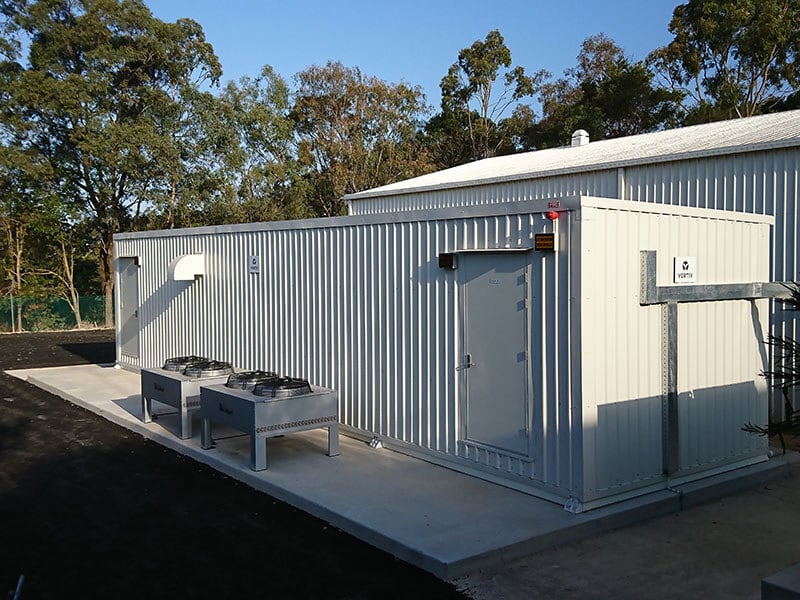If smart cities are to work, people need to trust the critical infrastructure behind them
This article originally appeared in the Australian Financial Review
Australia’s $50 million-plus Smart Cities and Suburbs Program is well and truly underway as business and government organisations launch initiatives in preparation for Internet of Things (IoT) and the newly-connected world.
Already we’ve seen cities such as Newcastle developing the network edge critical infrastructure needed for technology-fitted bus stops that provide users with access to real-time information such as schedules and seat availability; as well as real-time traffic analysis for roads and intersections to ensure, for example, that emergency vehicles get green lights all the way.
Meanwhile, Darwin is undertaking a $10 million program to ‘switch on the city’ and boost the economy. This includes upgrading street lighting to LED on ‘smart’ columns that can adjust lighting to help deter street crime.
Safety first – Both in the edge and core data centers
As the above examples show, the smart city environments being developed can improve our safety, but the necessary increases in connectivity and reliance on technology could also threaten it.
Before long, we’ll be leaning on digital health, autonomous cars, robots and more – this is innovation that could bring astounding benefits to our lives; but if there’s one thing we’ve learned, it’s anything digital can be hacked, including network edge data centers or other critical infrastructures, and anything connected to what’s being hacked then becomes vulnerable.
2018 has provided no respite from cybercrime. We’ve seen major sports brands, health services, government organisations worldwide and more fall victim to cyberattacks, which seem to grow more and more sophisticated every year. Our research shows that around one in five outages can be traced back to security failures such as denial of service (DoS) attacks.
As it stands, these are inconveniences at best, financially destructive at worst. They affect people because their data is compromised, or a digital service they rely on doesn’t work. For businesses, they carry a sizeable cost, not just financially, but through customer, stakeholder and reputational damage.
It’s bad news all around, and the risk gets worse the more we rely on Internet of Things enabled devices in our daily lives and the more businesses and government invest in technology – but life still goes on.
But it begs the question: what happens if a robot surgeon gets hacked? Or an autonomous car? Or the smart traffic system connected to the autonomous vehicle? Don’t forget, so many things will be connected in our smart cities that new access points that cybercriminals can infiltrate will be created.
To avoid such life-threatening disasters, we need to get smart around the critical infrastructure in place supporting smart city applications. This will include modular data centers and other smaller ‘network edge’ infrastructure – vital to security, maximising speed and minimising latency in these services – as well as traditional core data centres and cloud environments running services and transmitting data between devices.
If these systems are vulnerable, our smart cities – and potentially our lives – will be too.
The IoT and smart cities also raise privacy concerns
While our personal safety must come first, businesses and government organisations developing smart city applications must also be conscious of keeping our data safe.
Whether through breaches or uninvited data sharing, there’s a growing sense that people have lost control over their data, and many are questioning why our human right to privacy doesn’t get the respect it deserves.
If data is used in the right way, society can reap the rewards – safety, retail, transport, energy and more can be optimised and smarter applications within these industries can reduce costs.
Changing our attitude to data
But constant breaches and misuse of our data are keeping trust levels low. The mentality of how we approach data is off – for example, we are forced to opt out to keep our data from being used, rather than opting in to enable it.
Taking the European Union’s General Data Protection Regulation (GDPR) example, it may be time for businesses and government organisations to reverse this and create a more open dialogue about what data they own, what they plan to use it for and why customers should let them. This, coupled with better security measures to protect our data, will go a long way to regaining people’s trust and changing our attitudes to our data being used.
There are other concerns about Internet of Things and smart cities that a more open dialogue could help solve – what impact will an increasingly automated society have on jobs? A number of significant job cuts announcements have already been made this year and people have legitimate concerns for their livelihood. Individuals and communities need to understand how these concerns will be addressed.
Smart cities have the potential to deliver huge benefits to all of us and enable us to leverage technology in a way we haven’t seen before. On the surface, it’s about machines connecting with machines; but businesses and government organisations need to remember the true purpose is to benefit people.
Those people need to feel safe and trust that their data is secure and being used for their benefit – otherwise smart cities will fail, or, at best, be a shadow of what we’ve dreamt them to be.





